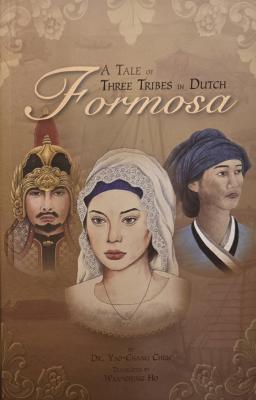It’s witty, funny, bold and at times irreverent. It’s Shakespeare as you’ve never seen or heard him before as the LAB Space closes out the year with Bomb-itty of Errors, a hip-hop version of the Bard’s The Comedy of Errors. It’s a show that you won’t want to miss.
Two sets of identical twins, Antipholus and Dromio, are separated at birth and raised in the different cities of Syracuse and Ephesus. The complications begin when the Syracuse Antipholus and Dromio, as joyful vagabonds, come to sedate Ephesus where they are both mistaken for their similarly named counterparts and quickly become enmeshed in their affairs.
Director Brook Hall has put together a strong cast of Steve Coetzee and Airy Liu (劉怡伶), the Syracuse Antipholus and Dromio, and Meg Anderson and Charlie Storrar, the Ephesus Antipholus and Dromio, to carry this delightful farce.

Photo courtesy of Antonella Gismundi
From here on in, one needs a touch of Samuel Taylor Coleridge’s “willing suspension of disbelief.”
In Shakespeare’s day, men played the women’s roles and actors spoke in iambic pentameter. Rap is often iambic tetrameter and the real delight of this play is the versatility shown by the four leads as they take on multiple roles and rap in style.
Everyone will have his/her favorite scenes. For this writer, it is Hasidic Hendelberg (Coetzee) getting lost in his own rap.
Another is when Storrar as Luciana is alarmingly “courted” by Syracuse Antipholus (Coetzee) whom “she” thinks is her sister’s husband.
Kudos go to costume designer Jenna Robinette, set designer Joseph Lark-Riley and show sponsorship from the Department of Culture, Taipei City Government. Not only are multiple costumes needed but ones that can come off and on in a split second as characters exit one door and return through another.
Lark-Riley’s graffiti-laced set provides the multiple entrances and exits as well as a visible balcony for “beat man,” DJ Cross Cutz (Cedric Bouadzi), who regularly interacts with the cast below.

May 11 to May 18 The original Taichung Railway Station was long thought to have been completely razed. Opening on May 15, 1905, the one-story wooden structure soon outgrew its purpose and was replaced in 1917 by a grandiose, Western-style station. During construction on the third-generation station in 2017, workers discovered the service pit for the original station’s locomotive depot. A year later, a small wooden building on site was determined by historians to be the first stationmaster’s office, built around 1908. With these findings, the Taichung Railway Station Cultural Park now boasts that it has

The latest Formosa poll released at the end of last month shows confidence in President William Lai (賴清德) plunged 8.1 percent, while satisfaction with the Lai administration fared worse with a drop of 8.5 percent. Those lacking confidence in Lai jumped by 6 percent and dissatisfaction in his administration spiked up 6.7 percent. Confidence in Lai is still strong at 48.6 percent, compared to 43 percent lacking confidence — but this is his worst result overall since he took office. For the first time, dissatisfaction with his administration surpassed satisfaction, 47.3 to 47.1 percent. Though statistically a tie, for most

Six weeks before I embarked on a research mission in Kyoto, I was sitting alone at a bar counter in Melbourne. Next to me, a woman was bragging loudly to a friend: She, too, was heading to Kyoto, I quickly discerned. Except her trip was in four months. And she’d just pulled an all-nighter booking restaurant reservations. As I snooped on the conversation, I broke out in a sweat, panicking because I’d yet to secure a single table. Then I remembered: Eating well in Japan is absolutely not something to lose sleep over. It’s true that the best-known institutions book up faster

The excellent historical novel by Chen Yao-Cheng (陳耀昌) is a gripping tale of Taiwan in the 17th century, called Formosa at the time, told from the perspective of characters representing the three major ethnic groups (the “tribes” mentioned in the title): the indigenous community, the Dutch and the Chinese. Another element that makes this book stand out is the female perspective, as two of the main protagonists are Maria, the daughter of the Dutch missionary Hambroeck, and Uma, an Aboriginal woman with a strong character. The main Chinese character is Chen Ze, a man in charge of a merchant ship